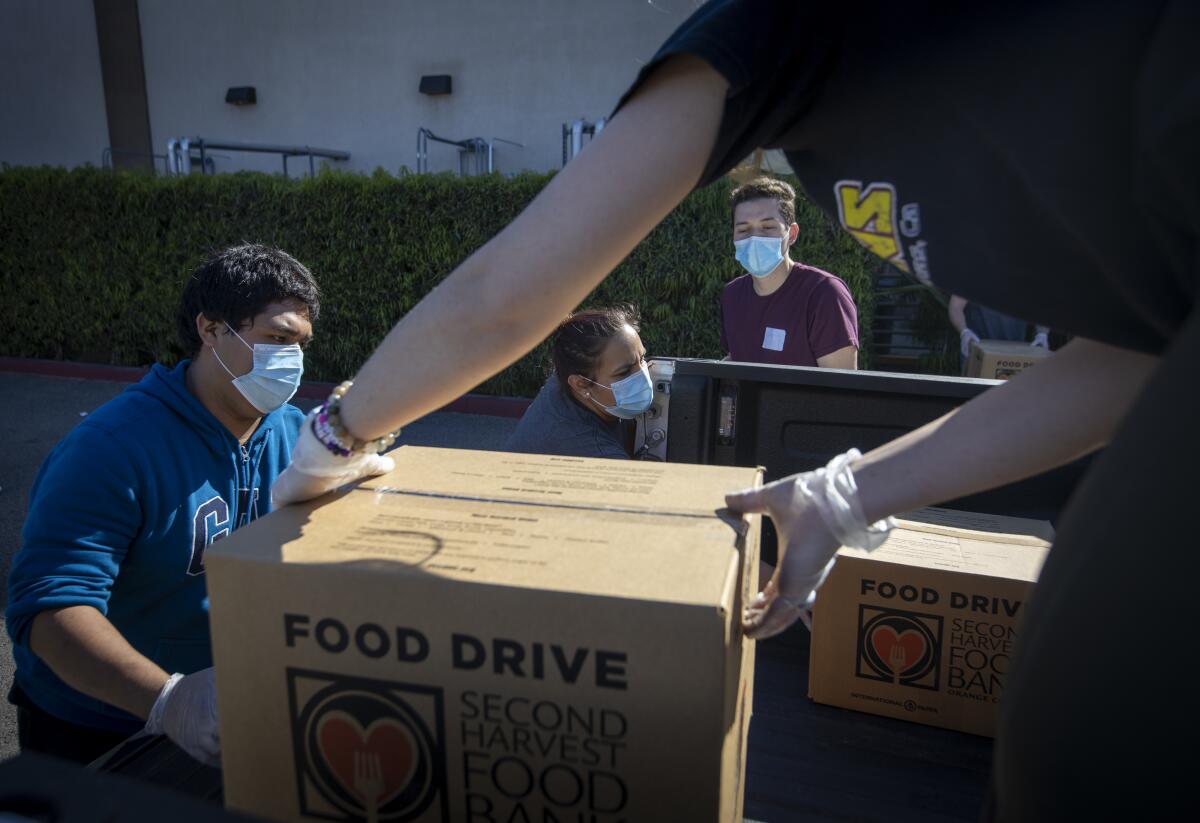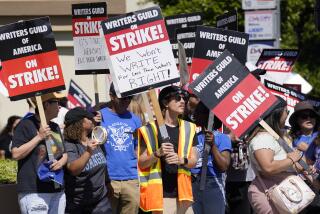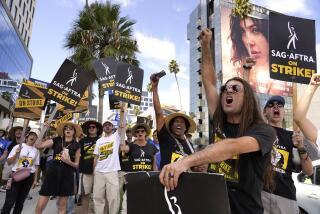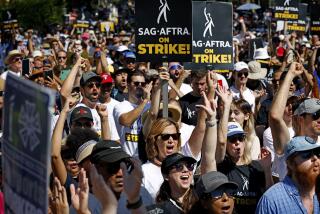The federal $600 unemployment benefit ends July 31. What’s next?

- Share via
For many out-of-work Americans, an extra $600 a week in federal unemployment insurance is providing some stability during an otherwise shaky economic period. But how long might that benefit last?
When the coronavirus pandemic first flared up in mid-March, causing a domino effect of immediate event cancellations and business closures, spending vanished almost overnight. In a swift move to flush cash through the economy, the federal government approved the $2-trillion Coronavirus Aid, Relief, and Economic Security Act.
Among other things, the CARES Act bumped regular state unemployment insurance — which can vary from as low as $213 per week in Alabama to $555 in Massachusetts (the national average is $378) — an extra $600 per week.
The benefit is set to expire July 31. But with a pandemic still in full force, lawmakers are debating what might come next. These are some of the several proposals on the table.
In early May, a group of Democratic legislators proposed extending the $600-per-week benefit past July 31 and then phasing it out once the economy stabilizes.
The Worker Relief and Security Act, introduced by Rep. Don Beyer (D-Va.) and Sens. Jack Reed (D-R.I.) and Michael Bennet (D-Colo.), would extend the $600-per-week benefit for 30 days past the president’s emergency declaration. Then they propose phasing out the funding, with changes triggered by each state’s unemployment rate. States with highest unemployment rates would receive a $450 weekly bump to start, and then it would decrease to $300. States with lower unemployment rates would start with $350 weekly compensation, which would decrease to $200.
Eligibility for the funding would also be extended several weeks. Cutting off the extra benefits at the end of July would be “a human and economic catastrophe,” Beyer wrote in a statement.
“If you’re [unemployed] in a state with a [lower] unemployment rate, it’s frustrating because your benefit amount decreases. But you win the lottery because you’re more likely to get a job back,” explained Alix Gould-Werth, the Washington Center for Equitable Growth’s director of family economic security policy.
Another proposal came a month ago, when House Democrats released the $3-trillion HEROES Act, which would extend unemployment benefits through January, among other stimulus proposals. But Republicans, who hold a majority in the Senate, quickly shot down the legislation as a progressive “wish list.”
As recently as last month, many Republicans, including President Trump, balked at the idea of extending the benefits past July. But given the millions of Americans who are unemployed, many Republican lawmakers now have acknowledged the need for continued assistance.
“With an unemployment rate so high and with a recession that will last well into the next year, it’s vitally important to maintain generous unemployment insurance, because it helps workers, it helps businesses because workers spend the money at businesses, and it helps communities,” said Peter Ganong, assistant professor at the University of Chicago’s Harris School of Public Policy.
The Hill reported that several Republicans are starting to coalesce around Sen. Rob Portman’s (R-Ohio) solution: a $450-per-week return-to-work bonus. A person returning to work would receive $450 per week for six weeks, on top of regular wages. Added to the federal minimum wage, Portman estimated, the $450 weekly bonus would make returning to work more attractive than continuing on unemployment insurance. The federal government would save by cutting its $600-per-week expenditure down $150, the state would save on its unemployment and the worker would benefit from the incentive, Portman said.
“That means that you would be making a little bit more in the workforce than you would be on unemployment,” Portman said on the Senate floor. “What’s more, this return-to-work bonus would put additional cash in the hands of individuals who lost their jobs due to the health crisis, which should provide additional stimulus to the economy that’s experiencing historic declines in consumer spending.”
Some lawmakers are concerned that people are making more money on unemployment than they did in their pre-pandemic jobs, hindering employers from getting their workers back. A Congressional Budget Office report showed that if the $600-per-week benefit continued until January, about five out of six recipients would receive more money from weekly benefits than they would from working during those months. Employment numbers would be lower through next year too, it said.
With a record-high unemployment rate, though, Gould-Werth said, the problem is not getting people off unemployment to return to work.
“People are actually going back to work with the $600” benefit, she said. “It’s pretty simple — we just don’t have enough jobs for workers to return to.”
The Paycheck Security Act, proposed by Sens. Bernie Sanders (D-Vt.), Mark Warner (D-Va.), Doug Jones (D-Ala.) and Richard Blumenthal (D-Conn.), would attempt to address that problem by funding small businesses to hire back furloughed or laid-off workers and cover their health benefits. The proposal, which garnered the support of Sen. Dianne Feinstein (D-Calif.), would give qualifying small businesses a refundable tax credit of up to $90,000 per employee annually, according to a news release.
Negotiations for the future of unemployment benefits are likely to heat up in the coming weeks. You can find your representative and senator in Congress to give feedback here.
More to Read
Inside the business of entertainment
The Wide Shot brings you news, analysis and insights on everything from streaming wars to production — and what it all means for the future.
You may occasionally receive promotional content from the Los Angeles Times.











